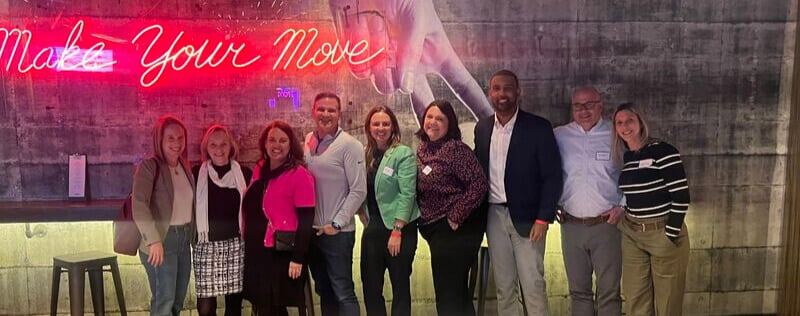Featuring Jason Wilcox & Judy Rader
Recently, we had the chance to sit down with two key leaders of dynamic organizations and explore what is necessary to achieve a successful transformation. Judy Rader is the senior vice president of corporate affairs and chief communications officer at Constellation. Jason Wilcox is the senior vice president of human resources at Burlington, but worked with AlignOrg Solutions while employed at another company. They shared their organizational redesign insights at an AlignOrg panel in Chicago.

How did you know it was the right time for an operating model shift?
Jason: We knew it was time for an organizational redesign when our strategy had clearly evolved, but our structure and ways of working hadn’t caught up. Market dynamics had shifted, and our teams were experiencing friction—decision-making was slow, accountability was unclear, and we weren’t leveraging our full potential. AlignOrg Solutions helped us identify these pain points and align our operating model with our strategic direction.
Judy: From a communications perspective, we could see that employees were feeling the disconnect. Our brand messaging was clear externally, but internally, we lacked alignment in roles and decision rights. We needed a structure that allowed us to execute effectively, not just talk about our aspirations.
What were your biggest “A-ha” moments in the transformation?
Jason: One of the biggest revelations was discovering our “ANCHOR“—the core capability that truly differentiates us. Instead of just tweaking reporting lines, we focused on what we needed to win in the market. Another a-ha moment? Realizing that our “superpowers” (what we do exceptionally well) weren’t always being leveraged in the right places.
Judy: We also had strategic wins by shifting focus from “who reports to whom” to how work actually gets done. For example, by clarifying decision-making frameworks and creating clear accountability mechanisms, we saw immediate improvements in cross-functional collaboration.

How did you keep leaders from a more traditional way of thinking, like “boxology”?
Judy: Too often, companies try to fix problems by simply redrawing org charts—what AlignOrg calls “boxology.” That approach ignores the bigger picture: capabilities, processes, decision rights, and behaviors. Instead, we took a capability-driven approach, ensuring that every structural change supported our strategy.
Jason: We also avoided the “leaders-in-a-room” trap, where a small group dictates the design in isolation. By involving key stakeholders in a structured process, we gained better insights and greater buy-in. People support what they help create—this was a game-changer in driving adoption.
Now that you are further into implementation, what do you wish you would have done differently?
Judy: The biggest lesson? Don’t overlook leadership behaviors and culture. Initially, we focused heavily on structure and processes, but we underestimated the impact of leadership alignment. Once we prioritized leader behaviors—embedding new ways of working into our culture—things really took off.
Jason: Messaging the “why” behind the changes was critical. People don’t resist change—they resist uncertainty. The more we clarified expectations and reinforced alignment, the more empowered our teams became.

The Organizational Redesign Journey
Aligning strategy, structure, and culture isn’t a one-time event—it’s an ongoing process. By embracing a capability-driven approach, ensuring leadership alignment, and focusing on how work gets done, we positioned our organization for long-term success.





